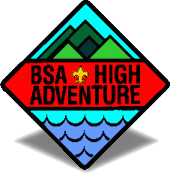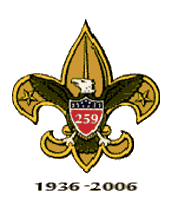|
|
|
|
|
|
Show that you know first aid for injuries or illnesses that could occur while camping, Learn the Leave No Trace principles and the Outdoor Code and explain what they mean. Write a personal plan for implementing these principles on your next outing.
Make a written plan for an overnight trek and explain how to get to your camping spot
Do the following:
Discuss footwear for different kinds of weather and how the right footwear is important Explain the proper care and storage of camping equipment (clothing, footwear, bedding). Explain the term "layering."
Present yourself with your pack for inspection. Be correctly clothed and equipped for an
Do the following: Discuss the reasons and methods of water purification. Discuss camp sanitation. Tell the difference between "internal" and "external" frame packs. Discuss the advantages and disadvantages of each.
Discuss the types of sleeping bags and what kind would be suitable for different Prepare for an overnight campout with your patrol by doing the following: Make a checklist of personal and patrol gear that will be needed.
Prepare a camp menu that is right for backpacking. Give recipes and make a Plan two breakfasts, three lunches, and two suppers. Discuss how to protect your food against bad weather, animals, and contamination. Pack your own gear and your share of the patrol equipment and food for proper carrying.
Show that your pack is right for quickly getting what is needed first, and that it has
Do the following: Discuss the advantages and disadvantages of different types of lightweight cooking stoves. Cook for your patrol a trail meal requiring the use of a lightweight stove.
Show experience in camping by doing the following:
On any of these camping experiences, you must do TWO of the following,
Hike up a mountain, gaining at least 2,000 vertical feet.
On one of your campouts, perform a conservation project approved in
Discuss how the things you did to earn this badge have taught you about |
|
BSA Advancement ID#: 001 Source: Boy Scout Requirements, #33215, revised 2004
|
|||||||||||||||||||||


 Troop 259
|